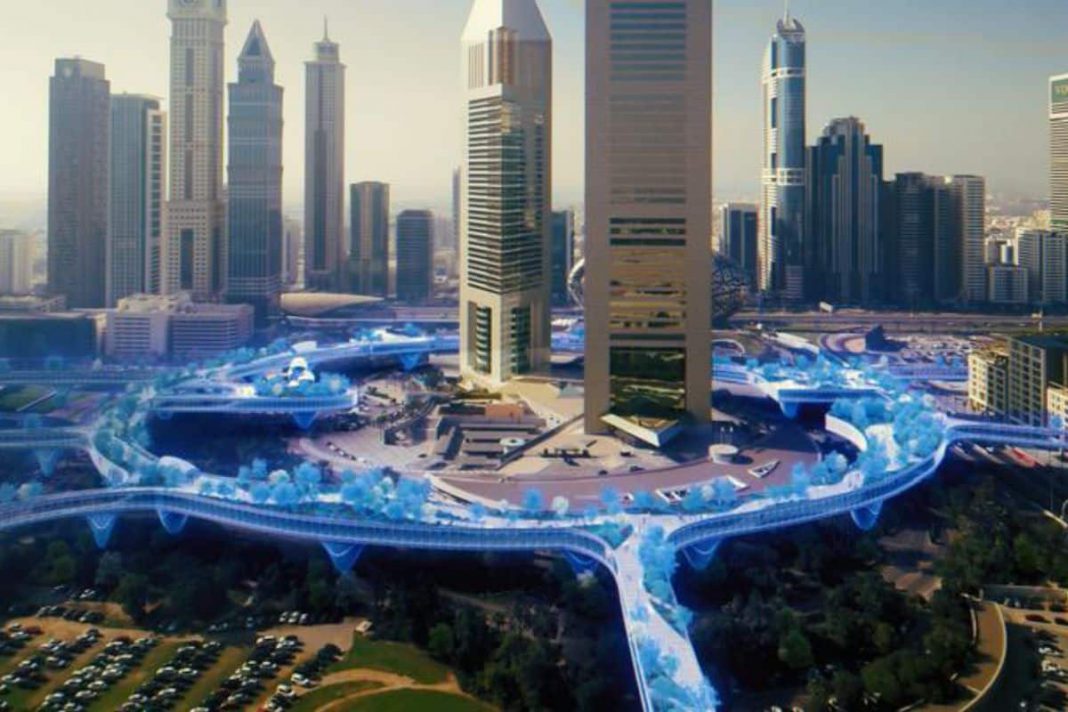Dubai is set to transform into a year-round pedestrian-friendly city with a 6,500-plus km network of modern walkways across 160 areas. The Dubai Walk Master Plan was unveiled by His Highness Sheikh Mohammed bin Rashid Al Maktoum, Vice President and Prime Minister of the UAE and Ruler of Dubai. Its pilot phase will run from 2025 to 2027, with full implementation in three stages from 2027 to 2040.
The plan includes constructing 3,300 km of new walkways and rehabilitating 2,300 km of existing ones by 2040, in addition to more than 900 km of walkways planned beyond 2040.
It also involves developing 110 pedestrian bridges and underpasses to enhance connectivity. This ambitious project aims to increase pedestrian and soft mobility from 13 percent to 25 percent by 2040.
The project is aligned with the Dubai 2040 Urban Master Plan’s ‘20-Minute City’ goal, enabling 80 percent of residents to access essential services within a 20-minute commute, and the Quality of Life Strategy 2033.
It focuses on enhancing pedestrian safety, connecting areas with existing walkways, and integrating creative and cultural elements into soft mobility infrastructure, reflecting the unique identity of each area.
The plan also promotes collaboration with strategic partners to deliver innovative infrastructure solutions while engaging youth to contribute creative ideas for walkway design and amenities.
Three Stages
Key projects include a bridge on Al Ittihad Road connecting Al Nahda and Al Mamzar, a bridge on Tripoli Street linking Al Warqa and Mirdif, a bridge on Al Khawaneej Street joining Mushrif and Al Khawaneej, and a bridge on Dubai-Al Ain Road connecting Dubai Silicon Oasis and Dubailand.
The project will seamlessly link major landmarks such as Burj Khalifa, Dubai International Financial Centre, Dubai Marina, and Jumeirah Lakes Towers. Each route will feature distinctive designs, colours, lighting, and landscaping, reflecting the unique identity of its surrounding area.
The walkways will incorporate greenery, shaded areas, misting systems, interactive digital screens, art displays, sports and entertainment equipment, rest areas, and commercial spaces.
Accessibility and safety are prioritised through the use of signage, ground markings, lighting, integrated pavements, art displays, and integration with navigation systems and smart applications.
Sheikh Mohammed reviewed plans for the 17 km first phase of pedestrian walkways, featuring two key routes: The 15 km Al Ras Historical Route in Al Ras and Al Souk Al Kabeer highlights the emirate’s heritage, including 5 km along the revitalised waterfront with 25 rehabilitated public squares featuring shaded rest areas, green spaces, and art displays.
His Highness highlighted the importance of creating a distinctive urban identity and integrating cultural and creative elements into the infrastructure. Key locations such as Burj Khalifa, Dubai Marina, and Jumeirah Lakes Towers will be seamlessly connected, reflecting Dubai’s commitment to innovation and sustainability.
The Future Loop, a 2 km iconic elevated walkway near the Museum of the Future, will connect landmarks like Emirates Towers and Dubai World Trade Centre, offering air-conditioned and shaded spaces. Scenic-Leisure Walkways will include waterfront paths, urban routes, green trails, and mountain tracks, while Community Walkways will link residential areas to nearby attractions.
The Master Plan incorporates road infrastructure improvements, such as transforming the Trade Centre Roundabout, reducing travel time, and increasing road capacity by 30 percent. A smart app will complement the initiative, providing route details, user reviews, and incentives for walking, enhancing user engagement. The app will also include a database of Dubai’s pedestrian network, highlighting points of interest, art displays, rest areas, and nearby events. A reward system will award points for distances walked, redeemable for discounts or digital wallet credits.


